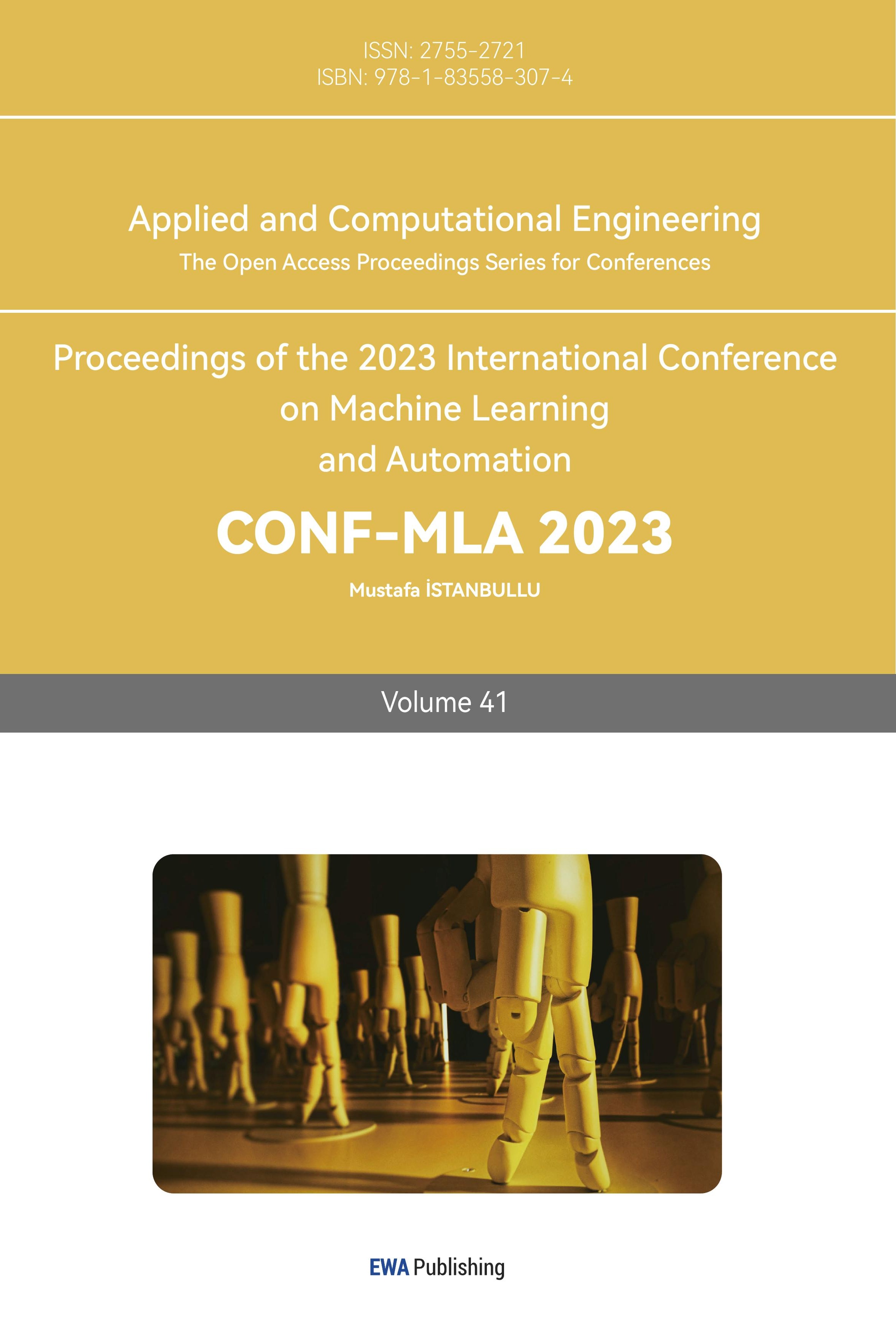References
[1]. Suri J S et al 2021 A narrative review on characterization of acute respiratory distress syndrome in COVID-19-infected lungs using artificial intelligence Computers in Biology and Medicine 130 104210
[2]. World Health Organization 2023 https://covid19.who.int/
[3]. Safiabadi T Seyed H et al 2021 Tools and techniques for severe acute respiratory syndrome coronavirus 2 (SARS-CoV-2)/COVID-19 detection Clinical microbiology reviews 34.3 10-1128.
[4]. Kukar M et al 2021 COVID-19 diagnosis by routine blood tests using machine learning Scientific reports 11.1 10738
[5]. Domínguez O Juan L et al. 2021 Machine learning applied to clinical laboratory data in Spain for COVID-19 outcome prediction: model development and validation Journal of medical Internet research 23.4 e26211
[6]. Li L et al 2020 Using artificial intelligence to detect COVID-19 and community-acquired pneumonia based on pulmonary CT: evaluation of the diagnostic accuracy Radiology 296.2 E65-E71
[7]. Singh T et al 2022 Ftl-CoV19: A Transfer Learning Approach to Detect COVID-19 Computational Intelligence and Neuroscience 2022
[8]. Maior C B S et al. 2021 Convolutional neural network model based on radiological images to support COVID-19 diagnosis: Evaluating database biases Plos one 16.3 e0247839.
[9]. Qiu Y et al 2019 Semantic segmentation of intracranial hemorrhages in head CT scans In 2019 IEEE 10th International Conference on Software Engineering and Service Science (ICSESS) pp 112-115) IEEE
[10]. Lehečka J Psutka J V and Psutka J 2023 Transfer Learning of Transformer-based Speech Recognition Models from Czech to Slovak arXiv preprint arXiv:2306.04399
Cite this article
Gao,W. (2024). Edge impulse-based pretrained neural network for diagnosing COVID-19. Applied and Computational Engineering,41,215-221.
Data availability
The datasets used and/or analyzed during the current study will be available from the authors upon reasonable request.
Disclaimer/Publisher's Note
The statements, opinions and data contained in all publications are solely those of the individual author(s) and contributor(s) and not of EWA Publishing and/or the editor(s). EWA Publishing and/or the editor(s) disclaim responsibility for any injury to people or property resulting from any ideas, methods, instructions or products referred to in the content.
About volume
Volume title: Proceedings of the 2023 International Conference on Machine Learning and Automation
© 2024 by the author(s). Licensee EWA Publishing, Oxford, UK. This article is an open access article distributed under the terms and
conditions of the Creative Commons Attribution (CC BY) license. Authors who
publish this series agree to the following terms:
1. Authors retain copyright and grant the series right of first publication with the work simultaneously licensed under a Creative Commons
Attribution License that allows others to share the work with an acknowledgment of the work's authorship and initial publication in this
series.
2. Authors are able to enter into separate, additional contractual arrangements for the non-exclusive distribution of the series's published
version of the work (e.g., post it to an institutional repository or publish it in a book), with an acknowledgment of its initial
publication in this series.
3. Authors are permitted and encouraged to post their work online (e.g., in institutional repositories or on their website) prior to and
during the submission process, as it can lead to productive exchanges, as well as earlier and greater citation of published work (See
Open access policy for details).
References
[1]. Suri J S et al 2021 A narrative review on characterization of acute respiratory distress syndrome in COVID-19-infected lungs using artificial intelligence Computers in Biology and Medicine 130 104210
[2]. World Health Organization 2023 https://covid19.who.int/
[3]. Safiabadi T Seyed H et al 2021 Tools and techniques for severe acute respiratory syndrome coronavirus 2 (SARS-CoV-2)/COVID-19 detection Clinical microbiology reviews 34.3 10-1128.
[4]. Kukar M et al 2021 COVID-19 diagnosis by routine blood tests using machine learning Scientific reports 11.1 10738
[5]. Domínguez O Juan L et al. 2021 Machine learning applied to clinical laboratory data in Spain for COVID-19 outcome prediction: model development and validation Journal of medical Internet research 23.4 e26211
[6]. Li L et al 2020 Using artificial intelligence to detect COVID-19 and community-acquired pneumonia based on pulmonary CT: evaluation of the diagnostic accuracy Radiology 296.2 E65-E71
[7]. Singh T et al 2022 Ftl-CoV19: A Transfer Learning Approach to Detect COVID-19 Computational Intelligence and Neuroscience 2022
[8]. Maior C B S et al. 2021 Convolutional neural network model based on radiological images to support COVID-19 diagnosis: Evaluating database biases Plos one 16.3 e0247839.
[9]. Qiu Y et al 2019 Semantic segmentation of intracranial hemorrhages in head CT scans In 2019 IEEE 10th International Conference on Software Engineering and Service Science (ICSESS) pp 112-115) IEEE
[10]. Lehečka J Psutka J V and Psutka J 2023 Transfer Learning of Transformer-based Speech Recognition Models from Czech to Slovak arXiv preprint arXiv:2306.04399









